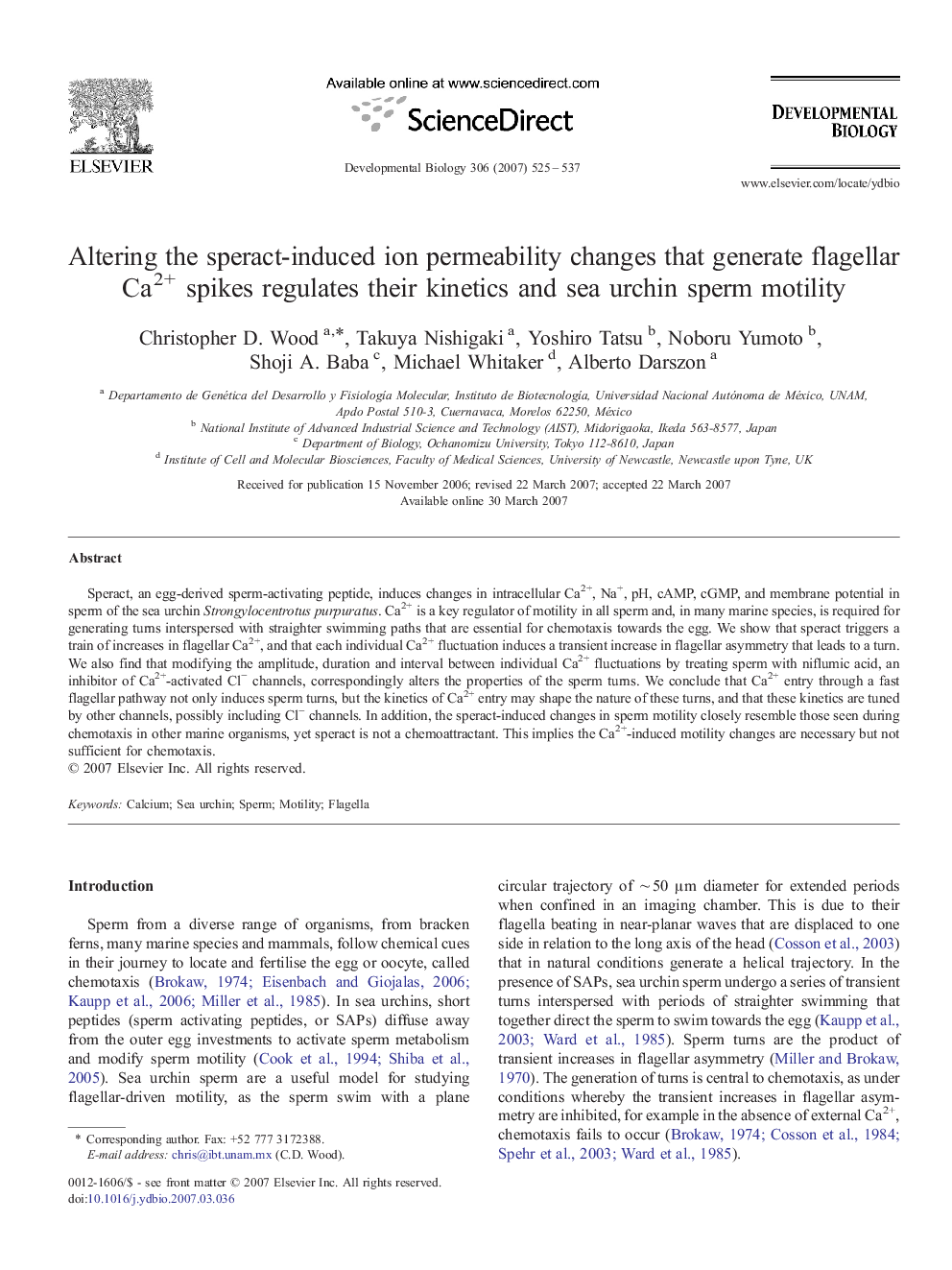| Article ID | Journal | Published Year | Pages | File Type |
|---|---|---|---|---|
| 2175224 | Developmental Biology | 2007 | 13 Pages |
Speract, an egg-derived sperm-activating peptide, induces changes in intracellular Ca2+, Na+, pH, cAMP, cGMP, and membrane potential in sperm of the sea urchin Strongylocentrotus purpuratus. Ca2+ is a key regulator of motility in all sperm and, in many marine species, is required for generating turns interspersed with straighter swimming paths that are essential for chemotaxis towards the egg. We show that speract triggers a train of increases in flagellar Ca2+, and that each individual Ca2+ fluctuation induces a transient increase in flagellar asymmetry that leads to a turn. We also find that modifying the amplitude, duration and interval between individual Ca2+ fluctuations by treating sperm with niflumic acid, an inhibitor of Ca2+-activated Cl− channels, correspondingly alters the properties of the sperm turns. We conclude that Ca2+ entry through a fast flagellar pathway not only induces sperm turns, but the kinetics of Ca2+ entry may shape the nature of these turns, and that these kinetics are tuned by other channels, possibly including Cl− channels. In addition, the speract-induced changes in sperm motility closely resemble those seen during chemotaxis in other marine organisms, yet speract is not a chemoattractant. This implies the Ca2+-induced motility changes are necessary but not sufficient for chemotaxis.
